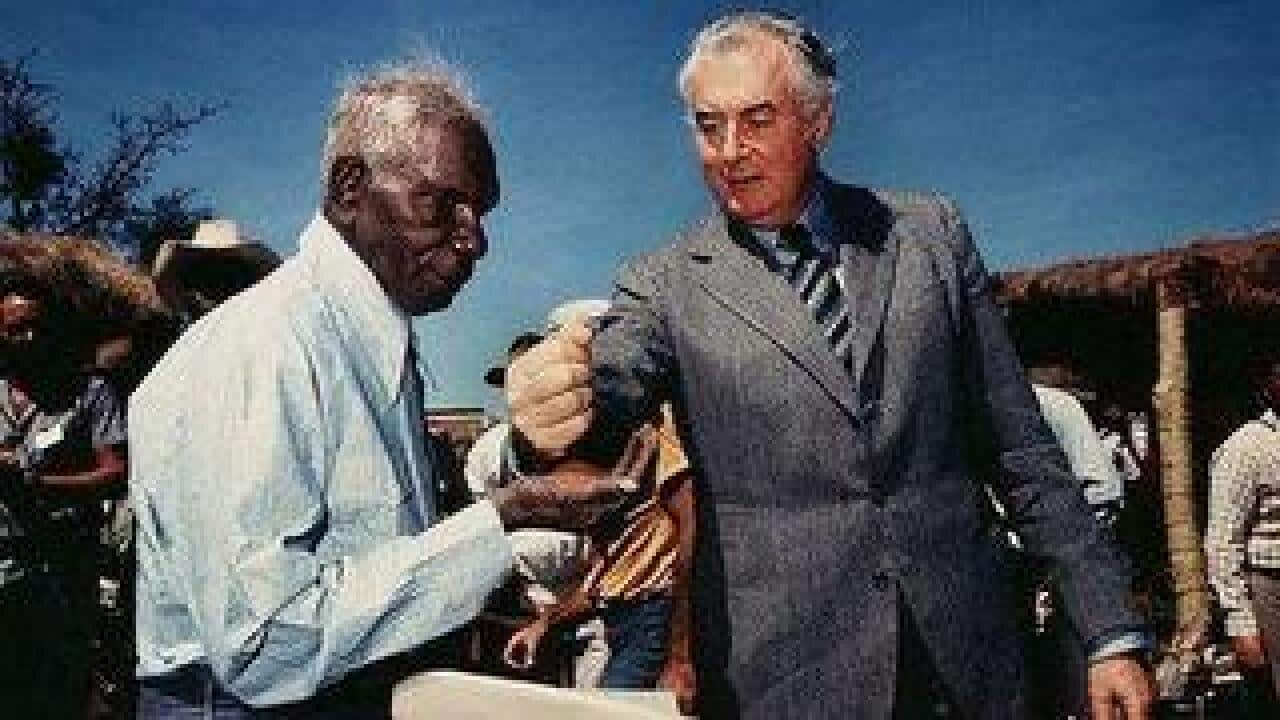When Mervyn Bishop clicked the shutter on his Hasselblad film camera, he knew he had a pretty good image.
But in 1975, he could not have foreseen his picture becoming an icon of the Aboriginal land rights movement, and perhaps one of the best-known press photographs from the Whitlam era.
“Black fella, white fella . . . everyone loves it, everyone wants it!” he tells NITV News over the phone from Dubbo.
As Indigenous and non-Indigenous alike gather in the NT town of Kalkarindji to mark the 50th anniversary of the Wave Hill walk-off, Mr Bishop’s photo is experiencing yet another revival, printed in newspapers right around the country.
The shot was taken some nine years after Vincent Lingiari and 200 stockmen and house workers walked off the job at the Wave Hill cattle station in August 1966, when their protest finally bore fruit. In 1975, then-prime minister Gough Whitlam formally handed back part of the station to the Gurindji people. The famous photograph was something of a fluke, and nearly didn’t happen.
The famous photograph was something of a fluke, and nearly didn’t happen.

Mervyn Bishop
The official ceremony when Mr Whitlam handed Mr Lingiari the deeds to the land was conducted in the shade of a shed – not a dream scenario for a film photographer using a flash.
“It was quite dark. With the flash, we took pictures. But it didn’t look good,” Mr Bishop told NITV in a documentary short from a few years ago.
“As soon as the formalities had ended, I approached Mr Whitlam and said: ‘Mr Whitlam, can we reshoot this picture outside in the sunlight, blue skies?’”
“Very well,” the prime minister replied.
Mr Bishop helped lead Mr Lingiari outside – Vincent’s eyesight was somewhat poor.
“So I kind of set him up, posed him, with the deeds in his left hand, put down his right hand. And Mr Whitlam bent down, picked up a handful of soil, and said: ‘will this do?’”
Mr Bishop said yes, it was very good, and asked him to hold still.
Before the photographers from rival publications could move in, he clicked the shutter, burning to film the image that would come to define his career.
“I guess at the time I just saw it as a good image,” he said. “I’d done my job good.”










